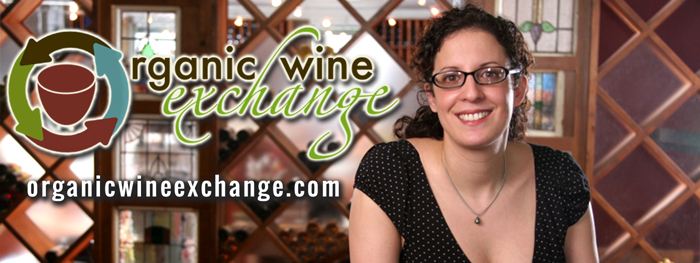
By Rick Riozza
A lover or connoisseur of wine is known in some places as an “oenophile”, pronounced: “ee-no-file”. One would think that this is perhaps some ancient Classical Greek term that we’re stuck with—but it’s not. It was more-or-less the name of one of the first Manhattan restaurants to encourage bringing in your own bottle of wine—and probably prompting yet another term, the “corkage fee”.
As we wine enthusiasts comfortably settle in on our favorite quaffs, media and the like will always attempt to stir us to consider what’s trending in wine! So while we’re softly sipping, let’s enjoy a bit of what the wide world of wine is working on:
Millennial Lives Matter: Recently, both USA Today and Wine Spectator Magazine reported that in 2015, Millennials drank 42 percent of all wine in the U.S, more than any other generation.
Millennials, defined as the 79 million Americans ages 21 to 38, drank 159.6 million cases of wine in 2015—an average of two cases per person. Whereas, Baby Boomers made up 38 percent of regular drinkers and Gen Xers made up 20 percent.
Another fun fact is the use of another fine term, “high frequency millennials”, who drank 3.1 glasses of wine per sitting, also more than other generations. And among those frequent drinkers under 30, two-thirds were women. (Among 30-something millennials, it’s half and half.)
All media is reporting: “Wine is winning with women“. Hey!—I’m always about wine, women and song! Welcome aboard ladies!! As a wine steward, I’ve noticed that these millennial women are more than happy to consider eclectic wines from places as varied as Greece, South Africa, New Zealand, and Chile. And they’re not afraid of spending every so often more than $20 a bottle—where my generation of men sometimes fall over when spending more than $12!—just kidding, I love my baby boomers!
And, of course, over half of wine-drinking Millennials said they talk about wine on Facebook. (Full disclosure, I, too, publish these articles on Facebook.)
Ingredient-based Labeling: As you consumers become more and more educated, one naturally becomes a bit more selective and choosy about what goes into the wines you’re drinking. Wines labeled organic, bio-dynamic, and low sulfur are already a big trend, and, we’ll be seeing forward-thinking winemakers listing more info on their labels to highlight their “un-manipulated” wine inside.
 We here in the Coachella Valley have our own organic wine maven, Annie Arnold founder of the Organic Wine Exchange, who writes on her website; “Organic Wine Exchange is designed with the organic consumer in mind. Our mission is to keep you informed on the latest organic wine trends and wine reviews. You are exposed to the heart and soul of the organic and biodynamic wine movement through biographies, interviews and videos on wine makers and wineries.
We here in the Coachella Valley have our own organic wine maven, Annie Arnold founder of the Organic Wine Exchange, who writes on her website; “Organic Wine Exchange is designed with the organic consumer in mind. Our mission is to keep you informed on the latest organic wine trends and wine reviews. You are exposed to the heart and soul of the organic and biodynamic wine movement through biographies, interviews and videos on wine makers and wineries.
“Additionally, we provide interesting content ranging from internal blogs to national articles all on one resource, and expose you to many of the organic and biodynamic wines available on the market today.” Good stuff for sure. Check it out at organicwineexchange.com.
New World Wine: If I do say so myself, I think we have fun covering out-of-the ordinary wines of the world in this column. My particular picks for the upcoming season as to wines and areas to keep an eye one are: Of course, the latest “queen of reds”, Pinot Noir. The last 20 years or so have found the pinots all along the Pacific Coast to provide almost every type of style to the original red Burgundy grape. From especially bold and fruit forward to the more nuanced complexities, pinots continue to rise and shine not only in California and Oregon but the world over.
New Zealand Pinot Noir may well fit the category of “new pinot kid on the block”. We’ll be seeing more of this kiwi pinot coming into our markets, and, it is very reasonably priced for the quality. These wines are typically light to medium-bodied with fresh and crisp red fruit and lively spices that are versatile with so many dishes and meals. As soon as you try one, you’ll see what we’re talking about.
Another wonderful wine to speak of is the Syrah from Walla Walla in Washington State. We’re well-aware how dark and grand the Syrah grape is, and the type of fruitful but complex wine it produces. Walla Walla Syrah surely provides the usual fruit-forward flavors but is also accompanied with bright acidity—which always makes itself welcomed at the dinner table.
I know we usually pour California Syrahs with big grilled and barbecued meats as it handles the char and heavy sauce flavors—and quite deliciously, I may add. But the Walla Walla stuff meets up very well with roasted poultry and pasta dishes; similar to the French Syrah with new world tendencies such as flavors like blackberry and plum to pomegranate, black pepper, olive, floral and mineral notes.
On the European front, we will continue to see delicious red wines with their lower level of alcohol. The wines of Sicily continue to gain popularity, in particular the reds from the Nerello Mascalese and Nerello Cappucio grapes. These wines are incredibly high quality, and offer an excellent value. In Portugal, with over 250 grape varieties—many of them indigenous to the country—their wines, apart from Vintage and Tawny Ports, are starting to show and attract some well-due attention.
Watch for Australia again! After years of declining sales, many are realizing the wines are a great value and are better than ever. And try South Africa—great wines coming out of there. Stay tuned! Cheers!












































